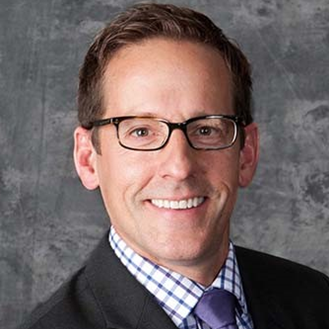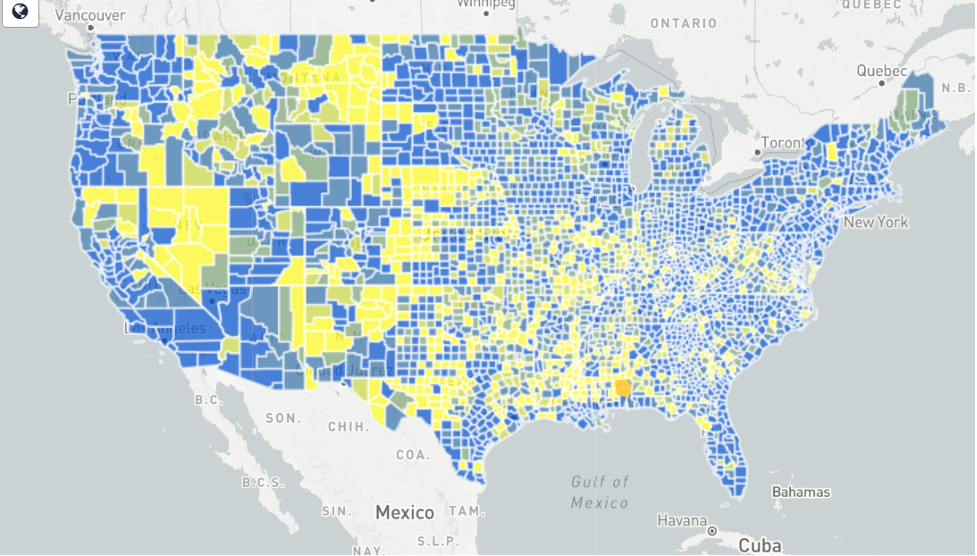Technology: The Lifeline and Linchpin of 2020
Lack of health insurance has been sighted as one of the biggest social determinants of health — until now.
Dr. John Findley

Technology has been a lifeline in 2020, unexpectedly entering the elite league of social determinants. A novel pandemic exposed many vulnerabilities in the American way. Technology has helped us weather this storm of catastrophic proportions and buoyed an unraveling of healthcare, work, school, entertainment, and human connection — at least for most. Its flimsy understructure is now supporting access to life’s basic necessities.
Solving the complex web of traditional social determinants has always been a daunting task. Each presents its own unique barrier. Primary care has long been the linchpin, holding access to healthcare together in rural communities. As providers responded to the COVID-19 pandemic, telehealth quickly jumped to the forefront as a means to protect patients and providers. CMS’ quick administrative actions opened the doors of virtual care. Prioritizing and addressing access to technology is critical. Without technology, the ramifications will ripple well beyond COVID-19’s initial devastation.
Lack of health insurance has been sighted for some time as one of the biggest social determinants of health — until now. The COVID-19 pandemic has rapidly exposed technology as the predominant barrier to equitable and accessible care.
Lack of Broadband Access in Rural Areas
This best laid plan gilded telehealth as a new access point to care yet exposed another Achilles. According to a 2019 Pew Trust report, 60% of healthcare facilities located outside of metro areas lack broadband access. (Figure 1) These communities have the unfortunate distinction of low rates of home broadband internet and higher-than-national-average mortality rates for cancer and other chronic diseases. The Federal Communications Commission (FCC) moved swiftly to make funds available to overcome the financial burden of making telehealth available. These funds were quickly exhausted severing a critical technology lifeline for many health systems already struggling to keep their doors open.
Protecting the Most Vulnerable
During the public health emergency (PHE), protecting our vulnerable elderly via social distancing has been a central strategy to “flatten the curve” and minimize the unnecessary loss of life. This year, virtual access to primary care has been a lifeline for more than 67 million Medicare beneficiaries. In a recent analysis, telehealth represented 0.1% of all primary care visits in February and increased to 43.5% in April — this represents an increase from nearly 2,000 patients to 1.28 million.
Figure 1.
Modern life and access to healthcare is increasingly dependent upon broadband access. One in five Americans (60 million people) live in rural areas. 60% of healthcare facilities located outside of metro areas lack access to the internet.

Overcoming Technology Black Holes
One in five Americans live in rural areas and depend on their hospitals as the only sources of care in their communities. When waivers during the PHE enabled providers to connect with patients in their homes, they realized the tremendous value virtual care was to patients who live far from their healthcare providers, lack transportation, or are more vulnerable to complications of COVID-19.
Addressing the Complexities with Grass Roots Thinking
Caravan Health helps build and manage accountable care organizations and population health programs for community health systems. Amidst the many disruptions, there were notable successes with our ACO partners due to their strong foundation in population health. Communities are taking matters into their own hands, innovating in ways only seen when unexpected circumstances like COVID-19 occur. Committed to the betterment of their own communities, they are solving for technology as a social determinant one patient at a time.
Alcona Citizens for Health, Inc. (Alcona), is a medical group with offices in nine Michigan locations and have participated in a Caravan Health ACO since 2014. With telehealth expansion during the pandemic, providers and staff worked together to equip each clinic with the resources required to implement a successful virtual care program. When it became apparent many patients lacked familiarity with technology or ready access to Wi-Fi, they created parking lot ‘hot spots’ where they provided their patients access and a ‘technology enabled drive-up’ experience. This included providing them with smart devices to use in the car giving them safe access to their providers.
Myriad grass roots innovations abound. In Kansas, a health system that is also a Caravan client established a smart phone “donor” program, collecting old phones from staff, wiping them of data, and distributing them to patients in need. Some have worked with local broadband companies to offer discounted wi-fi service to patients isolated and alone in their homes. Others have even purchased Wi-Fi-enabled Kindles and delivered them to patient’s homes as loaners, connecting vulnerable elderly patients to their trusted health care teams. The solution starts with a simple question. Routinely asking patients whether they have access to or are comfortable using technology should now be standard procedure. Performing this technology assessment up front, and securing a staff member as a technology concierge, has enabled teams to overcome common barriers with simple solutions and opened new doors to primary care for many. Small incremental innovations over time can have a lasting impact on patient lives across the country.
Now is not the time sit back. Start the conversation within your teams and borrow from the examples of peers. Keeping patients informed is an essential role of primary care particularly during this pandemic. Staying connected with patients, managing ongoing chronic disease and planning for the rapid distribution of available vaccines will be dependent on the same technologies. Traditional in-person approaches to vaccination promotion won’t work for those who don’t come in. With in-person care down dramatically for the foreseeable future, the ability to connect with patients of all demographics virtually will be one of the only ways to effectively collaborate with home health, visiting nurses, pharmacists, and others in the broader care team. For providers to stave off a pending tsunami of delayed management of chronic disease, all patients must have virtual access.
We cannot continue to ignore the looming crisis this lack of access represents. Hospitals, community health centers, and public service departments must collaborate with local governments and telecommunications companies to shed light on this vulnerability elevating technology as a key to their community’s future viability. Doing so will improve the health and well-being of many for years to come.
John Findley is the ACO Medical Director at Caravan Health.
In the Scope of Virtual Health and the Future of “Website” Manner, Per Ateev Mehrotra
August 10th 2023Briana Contreras, an editor of Managed Healthcare Executive, had the pleasure of catching up with MHE Editorial Advisory Board Member, Ateev Mehrotra, MD, MPH, who is a professor of healthcare policy at Harvard Medical School and an Associate Professor of Medicine and Hospitalist at Beth Israel Deaconess Medical Center.
Listen